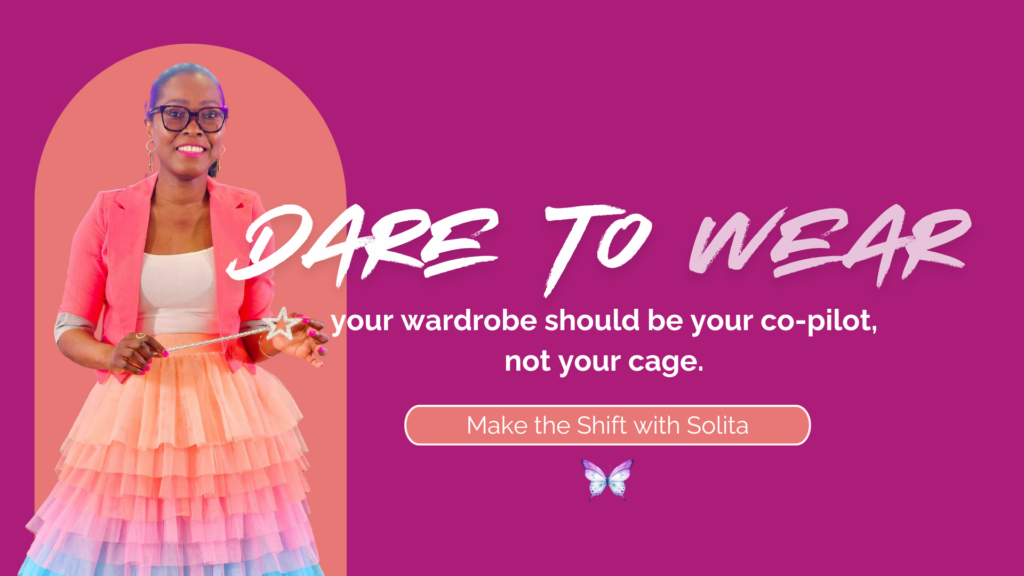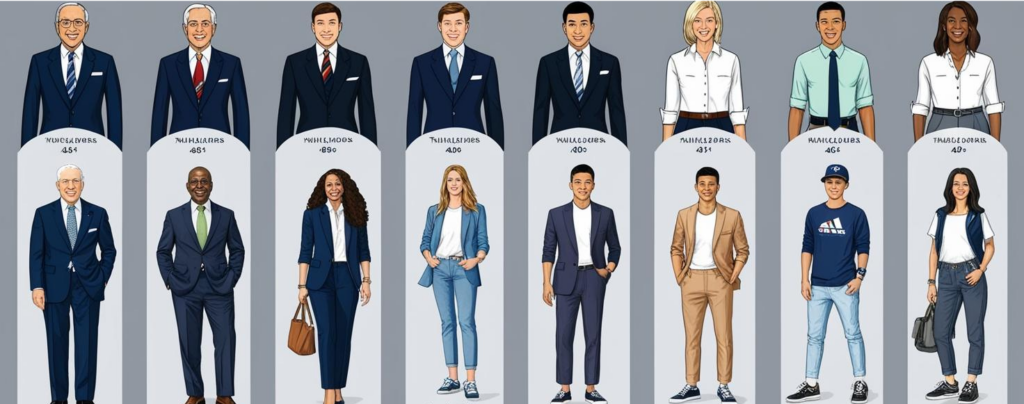
In today’s multi-generational workforce, dress codes are as varied as music tastes—ranging from ‘90s R&B classics to viral TikTok anthems. And few workplace topics ignite debate faster than the phrase, “Back in my day.”
A consultant I spoke with built their career in an era when traditional business attire was a sign of professionalism. A structured blazer, sharp suit, and polished shoes were non-negotiable. As they put it, “If someone showed up in joggers and flip-flops, I wouldn’t take them seriously.”
But times have changed. According to Forbes, 58% of employees now prefer business casual, casual, or no dress code at all. Forbes
I saw this shift firsthand during my 15 years in finance. The bank I worked for provided every employee with a strict uniform: navy suits, white button-downs, and black heels. After five years of the same look, employees—including myself—were over it.
I joined the dress code committee and quickly saw a larger issue: the rules were being made by one generation with one perspective.
Dress codes aren’t just about preference. They’re about identity, professionalism, and workplace culture.
Generational Approaches to Work Attire
Each generation’s approach to workwear is shaped by the cultural norms of their time. Here’s how different generations define “work appropriate.”
Traditionalists & Baby Boomers: The Power of Formality
For older generations, dressing for work meant structured suits, ties, pantyhose, and polished shoes—every day, no exceptions. To them, formal attire equates to professionalism, discipline, and respect.
Gen X: The Casual Friday Pioneers
As Gen Xers climbed the corporate ladder, they introduced a more relaxed approach, pioneering business casual in the workplace. They remember when Casual Fridays first emerged and still appreciate a polished look—think tailored blazers and slacks, but with more flexibility than their predecessors.
Millennials: Breaking the Mold
Millennials entered the workforce alongside the rise of tech startups and questioned the need for rigid dress codes altogether. Companies like Google normalized jeans, hoodies, and sneakers in corporate settings, shifting workplace fashion toward personal expression. For this generation, comfort and productivity go hand in hand.
Gen Z: The Authenticity Advocates
Gen Z—the newest generation in the workforce—grew up in an era of remote work, influencer culture, and fluid self-expression. They see no issue in blending casual and professional styles. To many in this generation, yoga pants and Converse sneakers count as business casual as long as they’re clean and intentional.
As Kourtlynn Faith shared on TikTok:
“Gen Z isn’t spending money on work clothes. It’s either work clothes or clothes to go out. There is no in-between.”

How Your Company Can Adapt Dress Codes for Multi-Generational Team
Rather than enforcing outdated policies, companies can create a modern, cohesive approach that respects both professionalism and personal expression.
- Create a Clear but Flexible Dress Code
Instead of rigid, one-size-fits-all policies, companies should define clear expectations while allowing room for individual expression. This means setting guidelines based on the company’s brand, client interactions, and industry standards rather than outdated traditions. Using a spectrum approach such as client-facing business, business casual, and creative professional helps employees navigate dressing expectations without feeling restricted.
- Encourage Leadership to Set the Tone
Employees often look to leadership for cues on what is acceptable. Having leaders across generations embody the dress expectations of the company without making it feel forced helps normalize modern interpretations of professional attire.
- Offer Workplace Styling & Image Workshops
Partnering with an expert to host workshops on personal branding, dressing for influence, and navigating workplace attire can help employees across all generations understand how to align their wardrobe choices with their career goals. This turns dress codes from a rulebook into a strategic tool for self-presentation.
Finding the Middle Ground
Saying, “This is how we’ve always dressed,” no longer works in the 21st-century workplace. Dress codes should evolve to support company growth, industry trends, and employee engagement. The goal isn’t to force a single style but to create a work environment where every employee, regardless of generation, feels confident, respected, and ready to show up as their best selves.
How does your workplace navigate dress codes across generations? Do you think traditional business attire still has a place in today’s professional world, or should companies fully embrace casual dress?
👇🏾 Share your thoughts in the comments! Let’s talk about it.
Comments:
share